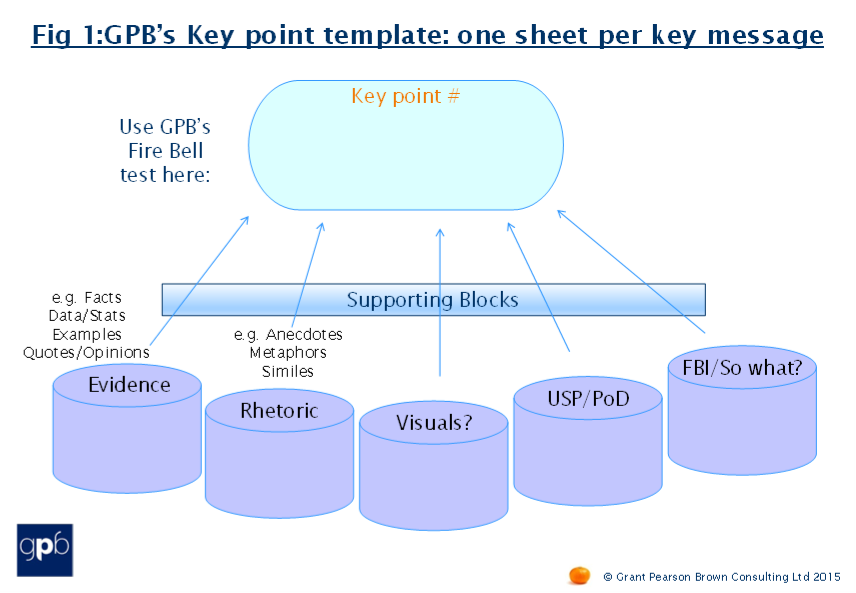It’s an age-old question in the academic and commercial world of communication – what is more important when presenting: the content (that is, “what you say”) or the delivery (that is, “how you say it”)?
The sexy answer is, of course, “how you say it”. We’ve all witnessed presenters with voices like gravelly maple syrup, piercing our souls with their eyes at the just the right time, harnessing the potent notion of ‘loud silence’ to make their point. Surely, that sort of stuff makes it game, set, and match to delivery, no?
Yet, as impressive as this may seem at the time, without the more tangible substance of stimulating, memorable and cogent content you are likely to forget or misunderstand the message and remember only the performance.
Let’s face it, an audience forgetting or misunderstanding your presentation is nobody’s idea of success, even if everybody says afterward that you were “brilliant” or “hilarious”.
In short, we believe the twin bedfellows of content and delivery are each as important as the other. The science supports us here by confirming that both are key when persuading1. So in response to a number of requests we’ve received recently to help clients prepare for key pitches, we at GPB set about refining our ideas and creating an improved framework for how to build your best content for a pitch or presentation. We hope this will help you think of effective content as being equal in merit to its more glamourous partner in persuasion, delivery.
The sequence goes like this: Audience, Key Points, Evidence, Structure, Prompts.
Part One – Contextual Analysis
The first step in constructing the best material is to have a content strategy meeting. Here you must ask yourself some simple logistical questions such as: who am I speaking to? How many people are in the audience? How knowledgeable are they about the subject? How long have I been given for this presentation? More importantly, how long will
I actually take for this presentation (taking less time than your allotted window is fine, even admirable; taking longer is a cardinal sin.) Then comes a more philosophical question which will guide the rest of your build and your structuring of the material: namely, what is my intention in presenting? That is, what do I want my audience to think, feel, and/or do after they have received my presentation?
This question is also key to understanding the amount of persuasion your content must carry within it.
Asking yourself specific questions
at the start is vital
to getting on the right track.
Part Two – The Build
The next step is to build your Key Content Points (or Key Messages) and have them ably underpinned by GPB’s Blocks of Supporting Content (see next page).
To do this, firstly perform GPB’s Firebell Test (see the last edition of this journal to review how to do this, it’s on our website) to arrive at your 1-3 key messages.
1 Petty, Richard & Cacioppo, John T., (2012). Communication and Persuasion; Central and Peripheral Routes to attitude change, Springer Science & Business Media.
Now write them down on A4 sheets of paper, one Key Message per page (landscape). You now have your Key Messages, but you have to make them robust and as compelling as possible by underpinning them with Blocks of Supporting Content.
These Blocks are broken down into categories and include: Verifiable Evidence such as Data, including statistics, others’ opinions, quotes and real examples; Creative Rhetorical Tools such as metaphors for impactful clarity, elegance or wit, or anecdotes for framing something in a way a client can relate to and/or enjoy; your effective use of GPB’s FBI (Feature-Benefit-Impact) model with its “So What?” test comes into play here, especially if you are pitching or selling; also any USPs or PoDs (Unique Selling Points or Points of Difference) and Visual Aids.
You don’t need every category of Supporting Blocks for every key point. You must determine which ones are the best support for each key message and insert as appropriate. However, by writing these into the GPB Key Point Template (Fig 1) you can then look at all of your A4 sheets simultaneously and see instantly the combination of support blocks you have for your whole presentation.
In this way, you can balance the various categories to ensure you have used everything available making the overall texture of your content varied and interesting whilst remaining purposeful.
If positioned and expressed well, these Blocks of Supporting Content work as logical, memorable and stimulating forces propelling your Key Points forwards. In turn, the Key Points become unshakeable in their credibility, and more attractive and persuasive as propositions.
Part Three – The Structure and Sequence
You should now have 1-3 separate pieces of A4 paper each containing a Key Message with Blocks of Supporting Content below. You’ll notice that, so far, no mention has been made of the order of the A4 sheets. This is deliberate, as is our suggestion that you use a different piece of paper, such as Fig 1 (available from our website) for each message.
Asking yourself the following questions will help you sequence your content most effectively. When you answer the positional questions place your pieces of paper – including the A5 pieces, which we’ll come to shortly – in order. When you place a sheet somewhere, take some time for reflection: really think about whether this is the best sequence to present your content and why you have arrived at that conclusion.
Q1: The GPB Firebell Test asked you to identify a Key Key Message first: where do you think this point is best placed? E.g. beginning/middle/end? Consider our Attention Level research when posing this question.
Q2: Why have you put the Key Key Point there? You need to know this and your answer should align with your intention for the presentation.
Q3: If relevant, where will you put your other key messages, and why? Again it is a good litmus test to see if you are structuring with your intention in mind.
Q4: What else if anything do you need to add to complete the blocks of content? E.g. further evidence, context, executive summary, or counterargument? Add these elements on to your A4 sheets.
Q5: What structural and/or linkage components are needed to join the blocks together? In other words, what components would be most effective at helping to move your central ideas off the page and land them firmly in the minds of your audience?
Not effectively joining your Key Messages can lead to gaps in your argument…
These components could include an agenda, signposting where you’ve been and where you are going, mini-summaries, and linkages back to arguments already made.
Write down your structural components on A5 sheets (e.g. tear A4 in half) and insert them into your sequence.
Part Four – The Conversion to Prompts
By now you should have your content laid out in order on the floor, your wall, or on your desk, including any effective conjoining bits that link the main pieces of your argument in an effective way.
But you can’t take this into the room with the audience or up on stage at your conference, so you have to turn it into its final form. So
we ask you a further question: What are you going to use to remind yourself to deliver the specific content you’ve just created?
There is a key choice here. You could choose a proper full (i.e. verbatim) script, or detailed, medium or thin hand-held/computerised notes, or even – although less advisable – just PowerPoint slides, or nothing but your memory.
There are pros and cons of each method that you must consider, particularly relating to the risks of each device and their perceived spontaneity. We have written extensively about this in previous editions.
The last step is to convert your A4 and A5 sheets into this final form, making sure you don’t omit or add anything that reduces the impact of the content and sequence you’ve created.
Certainly, you are likely to add words that carry your Key Messages and Supporting Blocks of Content, but these should grow organically from the build and structure already completed – do not be tempted to go off on a tangent, or you will lose the efficiency and impact of your material as constructed.
That’s it; you’ve finished creating your best content and you can start practising delivering it. Be aware of how your content flows when you start speaking it out loud, and remain open to changes; but at the same time, remember why you’ve structured your material in this way in the first place – your content’s only function is to serve your intention to maximum effect.
There is no single ‘right way’ to build content, but we think that with this disciplined approach we bring order and efficiency where chaos and ineffectiveness have reigned.
There are simply an enormous number of ways that are less effective! They include being too long, too short, too vague, too lateral, too complex, too simple, or just dull.
Building and structuring your content using this template will allow it to be full but brief, detailed but clear, authentic, pleasurable to listen to and, ultimately, impactful. That way you, and more importantly your audience, can be content with your content,. All that’s left is to deliver it with passion and conviction! Oh, and then take the inevitable stinky questions.
By Richard Keith.



